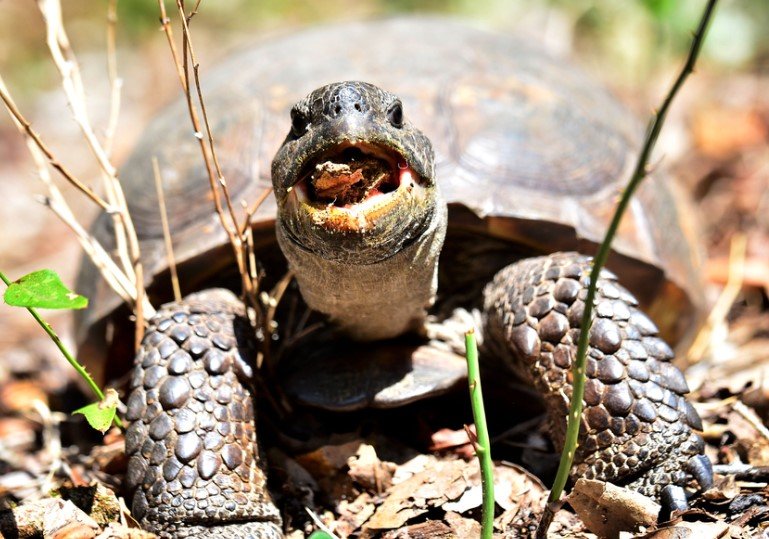Georgia wildlife officials announced a big win for conservation on September 24, 2025, as the Gopher Tortoise Initiative reached its target of protecting 65 viable populations of the state’s official reptile. This effort, led by the Georgia Department of Natural Resources and a wide network of partners, ensures the survival of these key animals in south Georgia’s sandy habitats and avoids federal endangered species listing.
The Road to 65 Protected Populations
The initiative started in 2015 with a clear plan to safeguard gopher tortoises from habitat loss and other threats. At that time, only 36 of the 125 known viable populations in Georgia had protection.
Experts determined that at least 65 populations, each with a minimum of 250 adult tortoises, were needed for long-term survival. Through surveys, landowner partnerships, and habitat restoration, the group hit this mark with the latest easement on 1,210 acres near Cordele.
This success builds on years of work, including buying land for new wildlife areas and using federal grants to secure easements. The U.S. Fish and Wildlife Service noted in 2022 that these actions helped keep eastern gopher tortoises off the endangered list.
The tortoises, known for their deep burrows, support over 350 other species in longleaf pine forests. Protecting them also boosts habitats for rare animals like the eastern indigo snake and striped newt.

Why Gopher Tortoises Matter in Georgia
Gopher tortoises are the only land tortoise native to the eastern U.S., found mainly in the Coastal Plain from South Carolina to Louisiana. In Georgia, they thrive in sandy soils where they dig burrows up to 40 feet long.
These reptiles act as a keystone species, meaning their homes provide shelter for hundreds of other creatures during fires, floods, or extreme weather. Without them, entire ecosystems could suffer.
Habitat loss from development and changes in forest management has cut longleaf pine forests from 90 million acres to just 4.7 percent of that today. The initiative focuses on restoring these areas to help tortoises and related wildlife rebound.
Recent data shows the protected populations now cover key sites across south Georgia, including new public areas for hunting, fishing, and hiking.
- Keystone role: Tortoises create burrows used by over 350 species, including frogs, snakes, and mammals.
- Habitat boost: Efforts have conserved nearly 100,000 acres of longleaf pine ecosystems.
- Economic perks: Protected lands support outdoor recreation and prevent costly federal regulations.
Partnerships Driving Conservation Success
More than 30 groups, including agencies, nonprofits, companies, and private landowners, joined forces for this project. Funding came from foundations, the U.S. Defense Department, and state programs like the Georgia Outdoor Stewardship Program.
One example is the recent easement with landowner Austin McKinney, whose family property near the Turner/Crisp County line now protects over 250 tortoises. The land features longleaf pines, unique sandstone outcrops, and hosts annual bird dog trials.
Biologists also guide developers to reduce impacts on tortoise burrows, blending growth with protection. This teamwork has uncovered unknown populations and strengthened overall conservation.
DNR Commissioner Walter Rabon praised the approach as a model for future wildlife efforts, noting it avoids economic hits from federal listings while saving species.
Challenges Faced and Overcome
Early on, the initiative dealt with tortoises being candidates for federal protection since the 1980s in some areas. Western populations in Louisiana, Mississippi, and Alabama gained threatened status in 1987.
In Georgia, threats like urban sprawl and poor land management put pressure on remaining habitats. The group tackled this through targeted surveys and restoration of longleaf pines, which are vital for tortoise survival.
Head-start programs at places like the Warm Springs National Fish Hatchery raise vulnerable hatchlings before release, boosting wild populations. These steps have turned potential declines into stable growth.
| Year | Key Achievement | Impact |
|---|---|---|
| 2015 | Initiative launch with 36 protected populations | Set goal for 65 populations and 100,000 acres |
| 2022 | U.S. Fish and Wildlife decides against eastern listing | Partnerships cited as key factor in decision |
| 2025 | Reached 65 viable populations | Secured habitats for over 16,000 tortoises statewide |
Looking Ahead for Tortoise Protection
With the benchmark met, focus shifts to maintaining these gains and expanding restoration. Ongoing monitoring will track population health and habitat quality.
Experts stress the need for continued landowner involvement and public awareness to prevent future threats. Programs like head-starting and easement incentives offer ways for more people to contribute.
This success ties into broader efforts across the Southeast, where similar projects restore longleaf forests and protect species like the gopher frog and southern hognose snake.
Share your thoughts on wildlife conservation in the comments below, and spread the word by sharing this article with friends who care about Georgia’s natural heritage.
